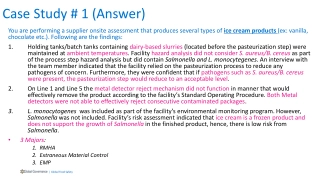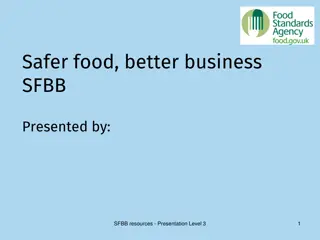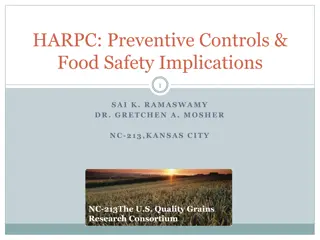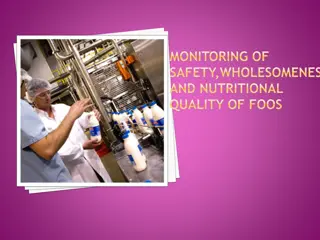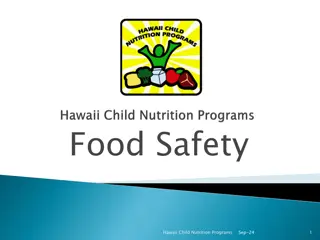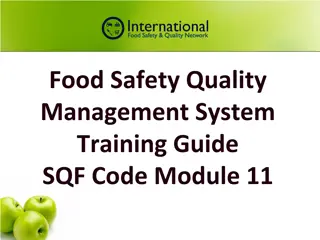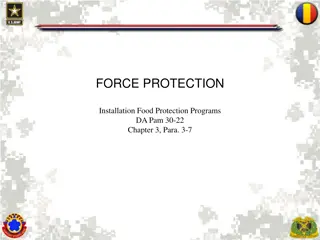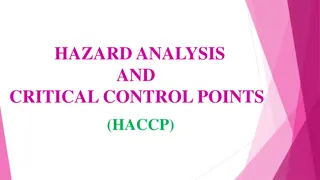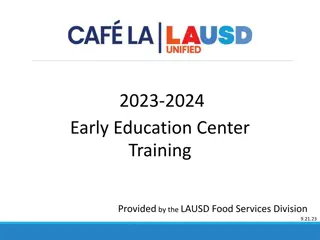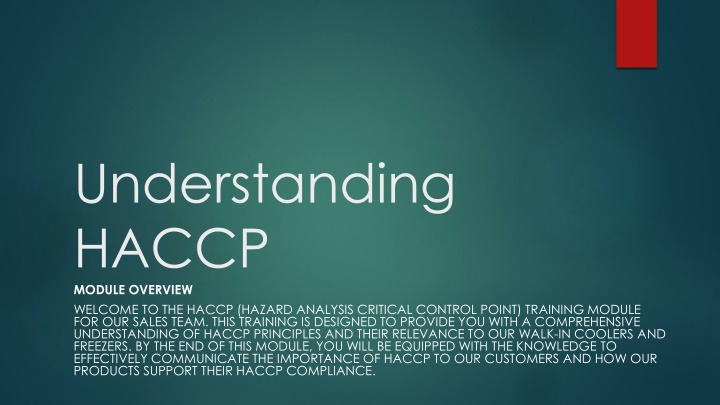
HACCP Principles for Food Safety Compliance
"Explore the overview, learning objectives, seven principles, and importance of Hazard Analysis Critical Control Points (HACCP) in ensuring food safety compliance. Learn how our products support HACCP compliance with features like temperature control and reliable equipment."
Download Presentation

Please find below an Image/Link to download the presentation.
The content on the website is provided AS IS for your information and personal use only. It may not be sold, licensed, or shared on other websites without obtaining consent from the author. If you encounter any issues during the download, it is possible that the publisher has removed the file from their server.
You are allowed to download the files provided on this website for personal or commercial use, subject to the condition that they are used lawfully. All files are the property of their respective owners.
The content on the website is provided AS IS for your information and personal use only. It may not be sold, licensed, or shared on other websites without obtaining consent from the author.
E N D
Presentation Transcript
Understanding HACCP MODULE OVERVIEW WELCOME TO THE HACCP (HAZARD ANALYSIS CRITICAL CONTROL POINT) TRAINING MODULE FOR OUR SALES TEAM. THIS TRAINING IS DESIGNED TO PROVIDE YOU WITH A COMPREHENSIVE UNDERSTANDING OF HACCP PRINCIPLES AND THEIR RELEVANCE TO OUR WALK-IN COOLERS AND FREEZERS. BY THE END OF THIS MODULE, YOU WILL BE EQUIPPED WITH THE KNOWLEDGE TO EFFECTIVELY COMMUNICATE THE IMPORTANCE OF HACCP TO OUR CUSTOMERS AND HOW OUR PRODUCTS SUPPORT THEIR HACCP COMPLIANCE.
Learning Objectives Understand the principles of HACCP. Recognize the importance of HACCP in the food service and food production industries. Identify how our walk-in coolers and freezers support HACCP compliance. Communicate the benefits of our products in relation to HACCP to potential customers.
Introduction to HACCP HACCP is a systematic approach to food safety that focuses on preventing hazards rather than relying on end-product testing It is designed to identify, evaluate, and control hazards that are significant for food safety.
The Seven Principles of HACCP: Conduct a Hazard Analysis: Identify potential hazards that could affect food safety. Determine Critical Control Points (CCPs): Points in the process where control is essential to prevent or reduce hazards. Establish Critical Limits: Set maximum or minimum limits for each CCP to ensure control. Monitor CCPs: Regularly check and record data to ensure each CCP stays within the critical limits. Establish Corrective Actions: Define actions to be taken if monitoring indicates a CCP is not within the established limits. Verify the System: Ensure the HACCP system is working effectively through regular reviews and audits. Record Keeping: Maintain detailed documentation of all HACCP processes, monitoring, and corrective actions.
Importance of HACCP in the Industry Food Safety and Consumer Protection: Ensures the safety of food products, protecting consumers from foodborne illnesses. Builds trust and reputation for businesses by demonstrating a commitment to food safety. Regulatory Compliance: Many food safety regulations require HACCP compliance. Helps businesses avoid fines, legal issues, and potential shutdowns. Quality Assurance: Maintains consistent quality of food products. Reduces waste and spoilage by controlling hazards at critical points
How Our Products Support HACCP Compliance Temperature Control: Our walk-in coolers and freezers are designed to maintain consistent temperatures, which is crucial for preventing microbial growth. Digital temperature monitoring systems provide real-time data and alerts for any deviations from set limits. Reliable Equipment: Built with high-quality materials to ensure durability and easy cleaning, reducing the risk of contamination. Regular maintenance features and easy access for servicing help maintain optimal performance. Custom Solutions: We offer customizable options to meet specific needs, ensuring that our units fit seamlessly into our customers' HACCP plans. Our design team works with customers to identify the best configurations for their unique requirements.
Communicating the Benefits to Customers Understanding Customer Needs: Ask questions to understand their current HACCP procedures and pain points. Highlight how our products address these specific needs and support their HACCP compliance. Product Features and Benefits: Emphasize the consistent temperature control, reliability, and ease of maintenance of our walk-in coolers and freezers. Discuss the importance of real-time temperature monitoring and how it helps maintain food safety.


